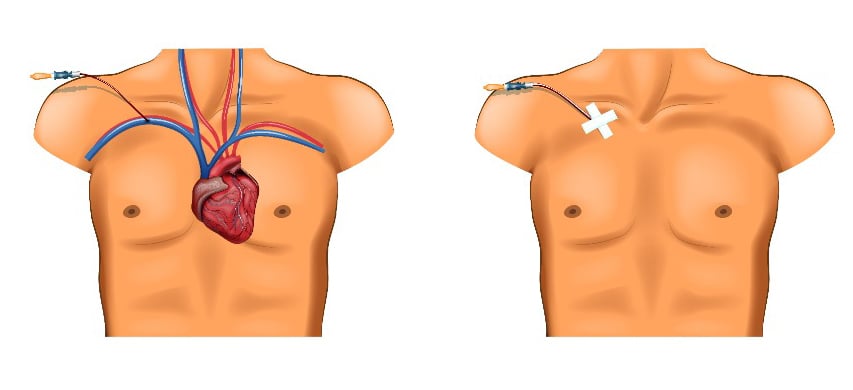Subclavian Central Lines: Be Humble – Be Prepared
Subclavian Central Lines: Be Humble – Be Prepared
Nov. 1, 2022
There’s a laundry list of potential complications from using the subclavian vein to place a central line. But there’s a growing number of reasons to make sure this procedure is part of your arsenal. Host Dustin Slagle, MD, and guest Gabriel Hoffman, MD, walk you through the evidence.
Host
Dustin Slagle, MD
NYU Pulmonary & Critical Care Medicine
dustyslags on Instagram
EMRA*Cast Episodes
There's a laundry list of potential complications from using the subclavian vein to place a central line. But there's also a growing number of reasons to make sure this procedure is part of your arsenal. Host Dustin Slagle, MD, and guest Gabriel Hoffman, MD, walk you through the evidence.
Overview
Central lines are common, but the subclavian site is less often used - and for good reason. How can we do this procedure safely and successfully when it is our best option? EMRA*Cast host Dustin Slagle, MD, and guest Gabriel Hoffman, MD, discuss an evidence-based approach to the subclavian central line.
Take-Home Points
- Practice other central lines and ultrasound-guided lines before approaching this advanced procedure.
- Ultrasound use can decrease complication rates and improve procedure success.
- The short axis has been shown to reduce procedure length and complication rates.
- Left-sided lines are less likely to be malpositioned.
- A cervical or thoracic rib can help protect the pleura as a backstop if one can be positioned behind the vessel (with or without the shrug technique).
- Know your limits and get help with advanced procedures until you develop proficiency.
READ MORE
- Advanced Critical Care Ultrasound Series: Subclavian Venous Access – Dealer’s Choice
- Ultrasound-guided Subclavian Vein Cannulation: The Vessel to Remember
Resources
- Bell J, Goyal M, Long S, et al. Anatomic Site-Specific Complication Rates for Central Venous Catheter Insertions. J Intensive Care Med. 2020;35(9):869-874.
- Björkander M, Bentzer P, Schött U, Broman ME, Kander T. Mechanical complications of central venous catheter insertions: A retrospective multicenter study of incidence and risks. Acta Anaesthesiol Scand. 2019;63(1):61-68.
- Guidelines for the Prevention of Intravascular Catheter-Related Infections. Centers for Disease Control and Prevention. 2011.
- Parienti JJ, Mongardon N, Mégarbane B, et al; 3SITES Study Group. Intravascular Complications of Central Venous Catheterization by Insertion Site. N Engl J Med. 2015;373(13):1220-1229.
- Fragou M, Gravvanis A, Dimitriou V, et al. Real-time ultrasound-guided subclavian vein cannulation versus the landmark method in critical care patients: a prospective randomized study. Crit Care Med. 2011;39(7):1607-12.
- Senussi MH, Kantamneni PC, Omranian A, et al. Revisiting Ultrasound-Guided Subclavian/Axillary Vein Cannulations: Importance of Pleural Avoidance With Rib Trajectory. J Intensive Care Med. 2017;32(6):396-399.
- Farkas J. Shrug Technique for US-guided subclavian lines. PulmCrit (EMCrit). April 23 2018. Accessed April 22, 2022.
- Tarbiat M, Manafi B, Davoudi M, Totonchi Z. Comparison of the Complications between Left Side and Right Side Subclavian Vein Catheter Placement in Patients Undergoing Coronary Artery Bypass Graft Surgery. J Cardiovasc Thorac Res. 2014;6(3):147-51.
- Vezzani A, Manca T, Brusasco C, et al. A randomized clinical trial of ultrasound-guided infra-clavicular cannulation of the subclavian vein in cardiac surgical patients: short-axis versus long-axis approach. Intensive Care Med. 2017;43(11):1594-1601.





